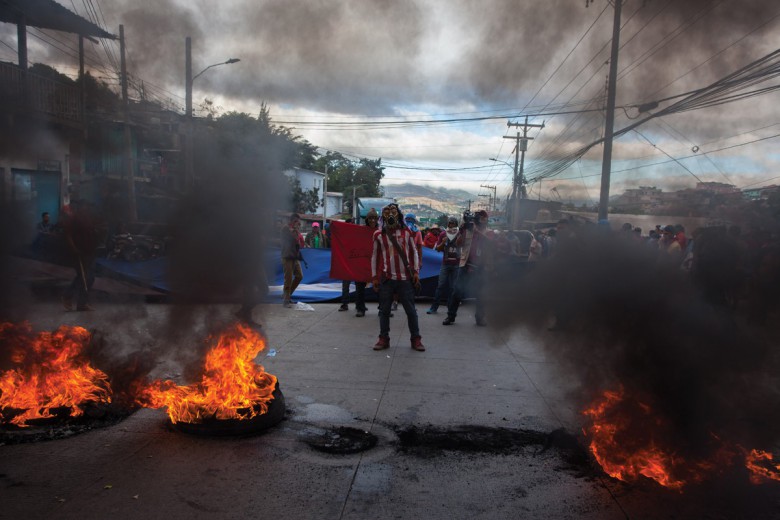
Asbestos, the heat-resistant mineral commonly used in construction materials up until the 1980s, is now recognized as the largest occupational health hazard in the history of public occupational health policy. It remains the leading cause of occupational health fatalities worldwide, as well as in Canada.
According to World Health Organization (WHO) figures, over 100,000 people die each year from exposure to asbestos. The WHO has publicly stated that all types of asbestos cause cancer in humans. And the International Agency for Research on Cancer, a research arm of the United Nations, has classified chrysotile asbestos, the type that is mined in Québec to this day, as associated with increased risk of lung cancer, respiratory disease and mesothelioma—a cancer of the pleural lining that surrounds the lungs for which there is no cure and no treatment, and which results in pain so excruciating that the victims and their families pray for death as a relief from their suffering.
Over 40 countries have now implemented universal bans on asbestos, including the chrysotile or white asbestos exported by Canada. The European Union further prohibits all of its 27 member states from participating in the export of asbestos to developing countries. And a U.S. ban may not be far off: early this year a bipartisan U.S. Senate Committee voted 19 to 0 in favour of the Ban Asbestos in America Act, 2007.
So why does Canada continue to mine and export this deadly mineral while working against the introduction of a global ban?
The political economy of asbestos in Canada
Canada is one of the leading producers of asbestos and the only country that actually promotes its “safe handling.” Though the Canadian government now admits that all forms of asbestos are carcinogenic, it nonetheless continues to promote the contradictory policy that it can be handled safely.
Since there is no safe level of exposure for any carcinogen, Canada’s “safe handling” policy amounts to nothing but Orwellian Newspeak, particularly since the government publicly admits that we cannot enforce controls on the handling of asbestos by importing states because it would violate their sovereignty.
Over 95 per cent of the 200,000 tonnes of asbestos mined annually in Canada is exported to developing countries. We export over 37 per cent to India where it is handled by former untouchables and child labourers, and where no developed regulatory system exists to monitor exposure to asbestos by workers and the public. Our exports to Indonesia and Taiwan are met with a similar lack of regulation.
Our “safe handling” policy is, therefore, merely a marketing strategy to justify the continued mining and export of a deadly carcinogen to the Global South.
Furthermore, since 1984 the Canadian government has given $250,000 a year to the Chrysotile Institute—an industry-sponsored think tank and, by its own admission, “marketing tool” that has worked aggressively to oppose a global ban and to cast doubt on the science that shows chrysotile asbestos to be a potent carcinogen.
In 2004 Canada went so far as to block the addition of chrysotile to a global list of toxic chemicals—a move that would have required Canada to provide information to the importing nations on the hazards of asbestos. In effect, Canada successfully organized opposition to this right-to-know requirement from Russia, China, Zimbabwe, Brazil, and Kazakhstan.
The minor role of asbestos exports within the Canadian economy is hardly significant enough to justify perpetuating the harm it causes. The asbestos industry in Canada turns an annual profit of $97 million, and, because of shrinking markets worldwide, now employs only 200 miners.
Why, then, do we continue to export it? The answer has a lot to do with the fact that Canada’s asbestos industry is concentrated in Québec—the province that no Canadian political party can afford to ignore, and in which the asbestos industry lobby is strong indeed. As Canadian Auto Workers’ then-Health and Safety director Cathy Walker told reporters a decade ago, “The Canadian and Québec governments are competing with one another to show just how prepared they all are to protect Québec jobs.”
No federal party wants to threaten its potential electoral support in the province by calling for a ban or a Royal Commission on the hazards related to asbestos. Thus, the Harper government has continued the previous Liberal government’s support for the industry and the Chrysotile Institute in order not to risk a loss of political support in Québec.
The labour movement’s dilemma
Caught between concern over the safety of asbestos and solidarity with the miners whose jobs depend on the industry, the Canadian labour movement has historically been divided on the issue of an asbestos ban. But the balance has begun to shift.
At its November 2007 convention, the Saskatchewan Federation of Labour took the unprecedented initiative of forming a Ban Asbestos Saskatchewan committee to educate workers in the identification, handling and monitoring of asbestos in Saskatchewan. The committee has joined forces with occupational health activists across Canada to form a national Ban Asbestos Canada organization. This organization will serve as the launching ground for a campaign against the Chrysotile Institute’s disinformation, and a campaign to lobby the federal government in support of a ban with “just transition” or compensation for the 200 asbestos miners and their families and communities in Québec.
To date, Peter Prebble, NDP Member of the Legislative Assembly, is the only Saskatchewan politician to publicly support Ban Asbestos Saskatchewan’s call for a ban. Federally, while NDP leader Jack Layton has so far remained silent on the issue, NDP Member of Parliament Pat Martin has campaigned for the ban, voting in November 2006 as the only dissenting voice to cut the Canadian government’s $250,000-a-year funding to the Chrysotile Institute.
Martin declared at the time that “corporate welfare for corporate serial killers is both morally reprehensible and economically unsound. Canada’s asbestos industry is under attack from all sides. Consumers no longer want to buy a product that contains an acknowledged killer and markets are drying up. At the same time, chrysotile producers in Russia, Zimbabwe and elsewhere can undercut Canadian suppliers. In light of the eventual demise of the industry, would it not be a better policy to work with those affected in Québec to achieve a just transition for investors, workers and affected communities? The continued support for the Chrysotile Institute is throwing good money after bad.”
There is no question that the difficult situation of asbestos miners in Canada demands the solidarity of the labour movement. Unions that represent asbestos miners—like the United Steelworkers of America, which represents the 200 workers at the Jeffrey mine near the town of Asbestos, Québec—are particularly conflicted. It must be acknowledged, however, that the price for the historical silence of some segments of the labour movement, whose support for the livelihoods of asbestos miners has outweighed their concern over the risk, is the continued sacrifice of Canadian asbestos workers themselves, as well as thousands of people in the countries to which Canada exports asbestos.
The fact that the union representing the miners themselves does not publicly support a ban points to a seldom mentioned truth about single-employer, company towns like Asbestos, Québec: in such places, workers are hostages to the company. When it comes to occupational health and safety, workers in these towns are prepared to suffer the shortening of their lives rather than lose their livelihoods. They accept their hostage condition so they can support their families. But they do so hoping that they will not experience the horrible death they’ve witnessed many of their friends endure.
The position of the Steelworkers and some other unions regarding asbestos miners in Québec points to an aporia rather than a contradiction. An aporia is a situation of undecidability, where two opposites are true: both exposure to asbestos and unemployment are injuries that should be avoided.
Canadian asbestos workers and their union are essentially hostages forced to make a choice in which both options are unbearable. Because they are rightfully suspicious that there can be a just transition, they believe they are choosing the lesser of two evils. And certainly, this “lesser of two evils” choice is a constant dilemma when it comes to occupational health and safety considerations the world over. All liberal occupational health and safety public policy is based on the trade-off between the integrity of the body and economic considerations. And economics always trumps the integrity of the worker’s body, particularly during this period of aggressive neoliberalism.
Because the concept of workers’ rights emerged during the ascendancy of the market itself, rights-based employment law only became coherent through the frames of a possessive individualism (a fundamental characteristic of capitalism). Workers’ rights were, from the beginning, subject to these kinds of trade-offs—trade-offs that transformed workers’ rights into possessions (his rights, her rights, their rights, etc.) that could be sold or traded away, rather than a universal standard governing economic relations and transactions.
Yet occupational health and safety is, or should be, an expression of common decency in the face of potential pain and suffering: one’s right to health and safety obliges others, as a matter of duty, to respect that right above all others. If someone has to trade the integrity of their bodies in order to survive, than that person has been stripped of their very dignity. Dignity is impossible without the free will to look after that which matters most to you and those you love.
The global ban on asbestos is imperative for many reasons, not least of which is for the sake of the dignity of asbestos miners themselves.
The criminal behaviour of these hostage takers—the asbestos mining companies, lobby groups, and their political backers—must be stopped once and for all. And it must be said with perfect clarity that when unions cast doubt on the science that supports the ban, they betray their brothers and sisters as well as themselves. The affected workers have no reason to deceive themselves or others, nor to be ashamed and embarrassed to be trapped. The devil’s choice, and its accompanying moral vacuum, is not of their making. The labour movement, however, is compelled to help.
The poet John Keats wrote that “Beauty is truth, truth beauty—that is . . . all ye need to know.” However, for the working class, it is still ugliness that points to the truth. May we have the courage to expose it.
Bob Sass is chair of the Ban Asbestos Saskatchewan Committee and national coordinator of Ban Asbestos Canada, as well as the former director of the Labour Studies Program at the University of Saskatchewan and former Associate Deputy Minister of Labour and Executive Director of Occupational Health and Safety in Saskatchewan from 1971-82.


_780_520_90_s_c1.jpg)


